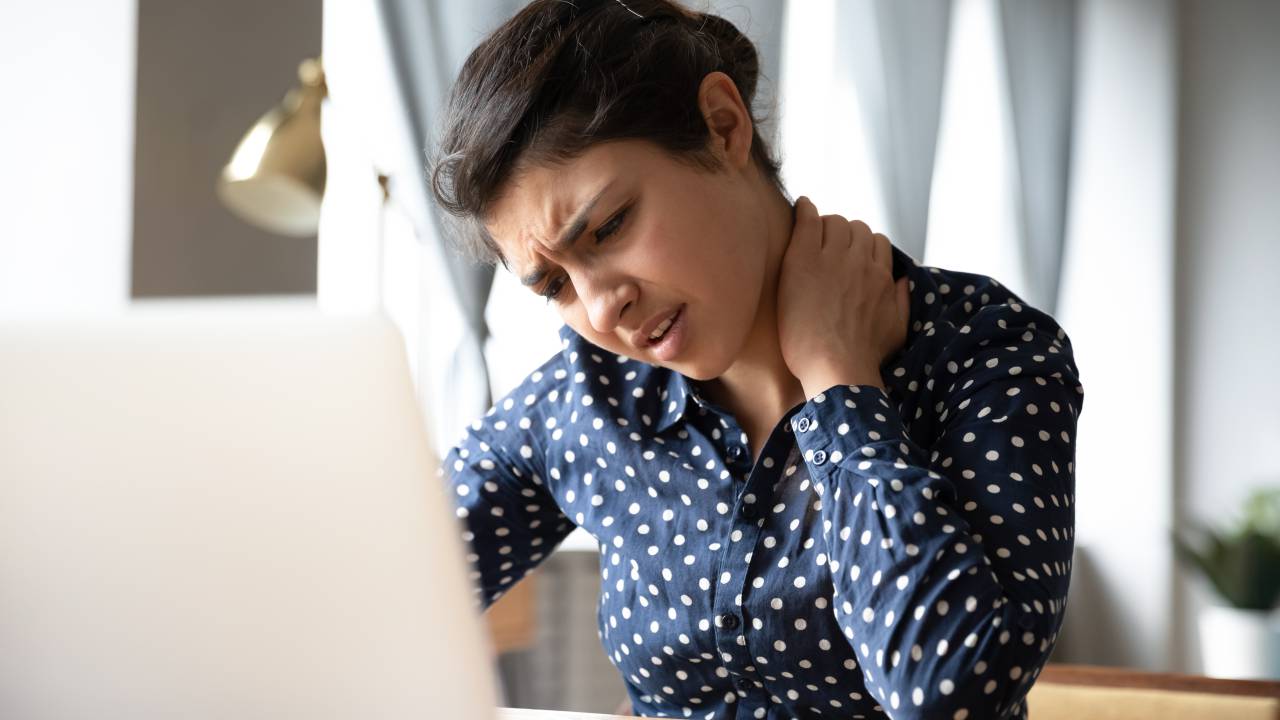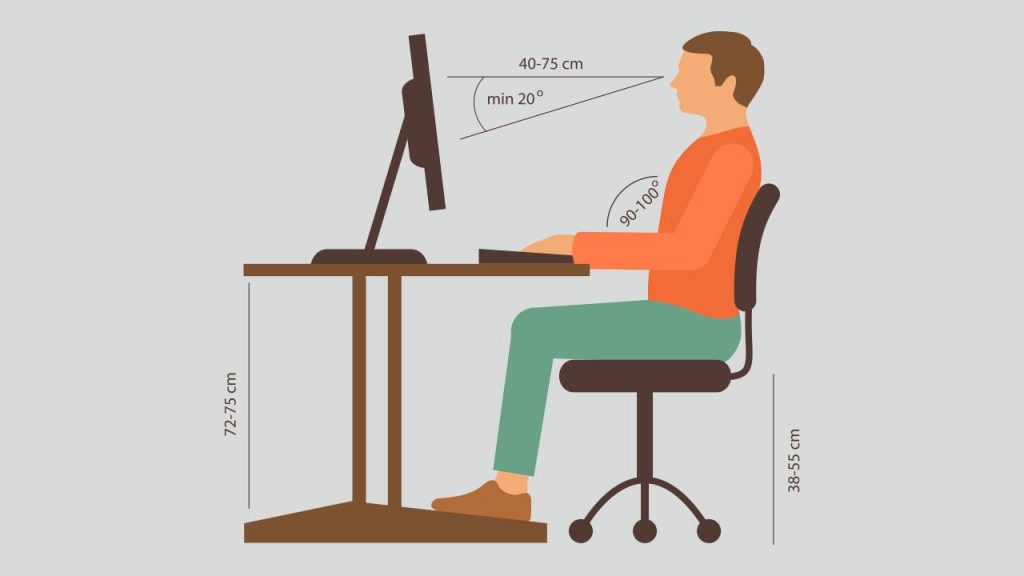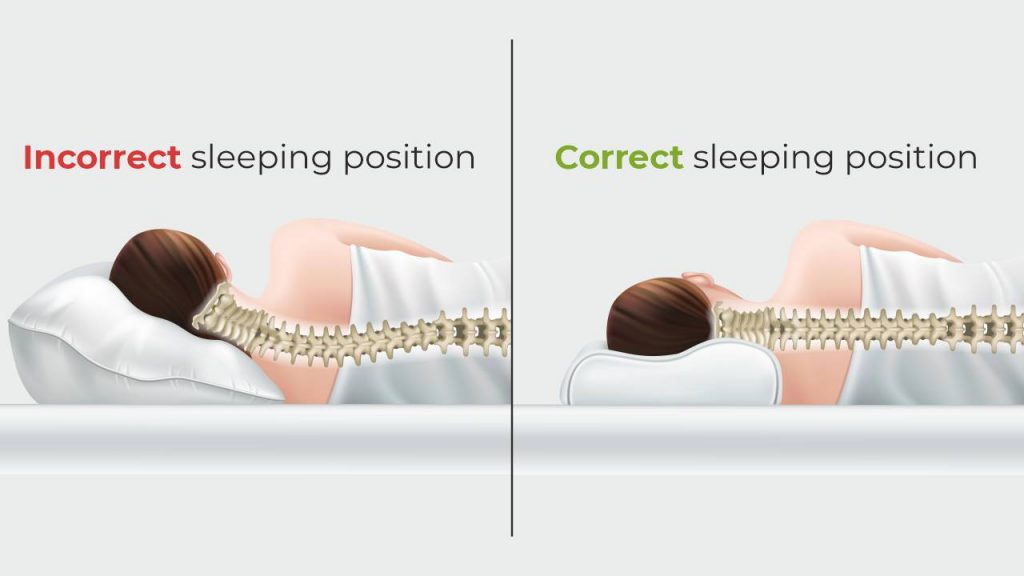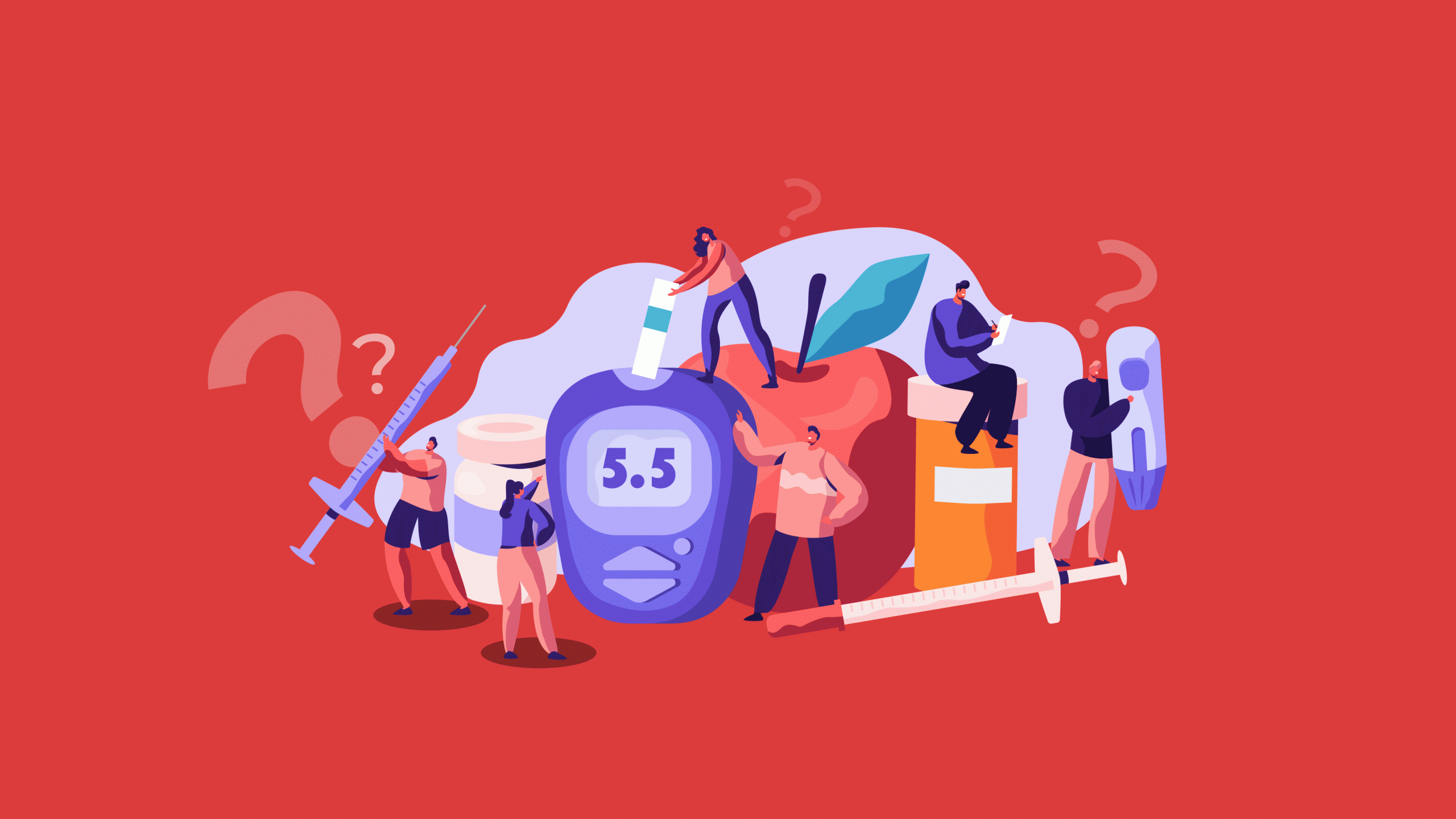
Neck Pain: Symptoms, Causes, and Treatment

Ever thought about the annoying knot you feel in the neck after scrolling through your Insta feed or WhatsApp for too long? If the pain is not severe and goes away after a few hours or days, you may ignore it. But what if the pain persists and interferes with your daily activities, affecting your sleep and productivity, and causing stress? These are signs that you need to consult a doctor for your neck pain.
What is neck pain?
Neck pain is any pain and associated discomfort affecting the structures within the neck region. Structures that constitute the neck are the cervical vertebrae (bones in the neck region of the spine), the discs present between the vertebrae, nerves, joints, and muscles.
Neck pain, however, may not be localized because of the many structures in the neck region. Pain can radiate down the shoulders, upper torso, chest, head, arms, and hands.
Is pain the only symptom?
Several symptoms may accompany neck pain:
- Neck muscle stiffness, which is usually felt like a knot in the neck, and mostly felt when you turn the head from side to side
- Headache, especially pain in the back of the head and tension headaches resulting from tight muscles
- Weakness and/ or pain that radiates down the arms
- Reduced mobility or loss of mobility of the neck
- Numbness and/ or tingling sensation in the palms or fingers
Causes of neck pain
Lifestyle factors
If you have poor posture, it can cause neck stiffness. Some instances include reading in bed, clenching the teeth, sitting and slouching in front of the computer for long hours without breaks, or looking down at your phone for a long time.
Extra body weight can put additional stress on the spine. If muscles are not able to provide support to the stressed spine, it can lead to loss of balance and may also cause the neck to bend forward.
Mental stress has various physical manifestations. Stress can cause you to unknowingly clench the muscles involved in facilitating neck movements, leading to a sore neck.
Osteoarthritis
In this condition, the cushion between the joints of the vertebrae, known as the cartilage, undergoes wear and tear. This leads to friction between the ends of the bones and causes damage to the bone as well as the soft tissue surrounding the joint.
Cervical spondylosis
Nerves in the cervical (neck) region may get compressed in instances like bone spurs, and herniated or slipped discs in the neck region. Cervical spondylosis is usually age-related, but may also occur due to wrong posture and prolonged strain over long periods of time. The pain may radiate to the jaws, arms, head, and behind the eyes.
Neck injuries
Neck pain resulting from injuries or accidents range from mild to severe, depending on the impact.
A whiplash injury occurs when the head is rapidly forced forward and/ or backward, going beyond the normal range of motion. Whiplash can be caused by automobile accidents or sports injuries. Such an injury can cause fatigue of the neck muscles leading to stiffness and pain.
Other health conditions
Several underlying conditions like meningitis, rheumatoid arthritis, and cancer can cause neck pain.
Managing neck pain
If the pain is manageable, you can try home remedies such as:
Ice and heat: You can apply ice in the initial 24-48 hours of the pain followed by heat therapy, in the form of a heating pad or hot compress.
Stretch: Do some light stretching of your neck muscles. You can gently move your head up and down and turn it from side to side. Avoid any kind of sudden jerking or activities that may put undue strain on the neck.
Massage: Gently massaging the sore area can help relieve muscle spasms.
Sit right: Try to maintain proper posture throughout the day. Avoid slouching and ensure adequate back support, and keep your phone and computer/ laptop monitors at eye level.
If your neck pain persists or worsens despite trying home remedies for a few weeks, or if you experience radiating pain or neurological symptoms, it is advisable to consult a qualified physician.
If there is prolonged pain or it gets aggravated, you may have to seek medical assistance. Your medical history and symptoms will help the doctor suggest appropriate treatment. In case of severe, chronic neck pain and advanced symptoms, physical and neurological examination, diagnostic testing, and imaging studies like MRI or CT scan may be advised. The following therapies may be suggested:
Non-steroidal anti-inflammatory medications (NSAIDs), some also in the form of topical gels and ointments. However, these should only be used under medical supervision. Muscle relaxants, steroids, drugs for relieving pain may be administered via injections as well.
Other non-surgical alternative treatments such as massage, acupuncture, chiropractic measures like cervical manipulation, physical therapy, Pilates, and yoga can also provide relief from neck pain.
A cervical pillow or collar can be used in case of certain neck injuries to provide support, maintain alignment, and restrict movements till the injury is healed.
Surgical intervention for neck pain is suggested when there is a more serious underlying condition, when non-invasive first-line and non-surgical treatments have failed, or when the pain and other neurological symptoms worsen.
Ablation is a minimally invasive, non-surgical treatment method, wherein heat is used on the nerves near the neck joints to relieve pain. However, this method requires immense precision and should be done only by experienced medical professionals.
Prevention
You can prevent neck pain by incorporating the following in your daily routine:
Active lifestyle: Performing at least some form of physical activity regularly is vital. You can do some stretches and go for a walk or run to stay active.
Stretching: Performing stretching exercises targeted at the neck muscles can help improve flexibility and maintain the range of motion. This can help relieve stiffness. If you work long hours at your desk, make sure you take frequent breaks and stretch your neck, back, and upper body.
Strengthening: Neck strengthening exercises can be beneficial in improving your posture and prevent pain flares. Exercises to strengthen the upper trapezius or upper traps can help in providing better support to the neck. It is recommended to perform neck strengthening exercises on alternate days to give the muscles time to repair.
Aerobic exercise: While performing aerobic exercises, the blood flow to the neck muscles and surrounding soft tissues in the neck and upper back increases. This can help in loosening the muscles and improving the range of motion. Moreover, when aerobic exercise is performed for 30 minutes or longer, it leads to the release of endorphins, which can help deal with pain. If you have prolonged pain or stiffness in the neck, make sure you work out under a qualified trainer’s supervision.
Yoga: Some yoga poses and stretches can be beneficial, especially when the pain results from tight muscles or a weak core. However, this should be practiced only under the supervision of a certified yoga instructor.
Rest: Along with an active lifestyle, make sure you have time off your busy schedule to rest and relax. Stress management methods, such as meditation, can help you relax your muscles. Getting proper and adequate sleep is very important.
Work posture: It is essential to maintain good posture, especially if you spend most of your time sitting at a desk.

1. Elevate your workstation. If your work requires you to be on the laptop or computer all day, prop your screen at eye level and the keyboard at your elbow level — your arms should ideally form two 90° angles. If your table is too low, you can stack books or other objects to raise its height or adjust the height of your chair.
2. Sit with your head back and chin in; take small breaks at least every hour.
3. Read at eye level. You may find it tough to go through your day without periodically checking your phone. However, if you stare down at your phone or read a book for too long without taking breaks, your head might get pulled forward, causing your spine to bear more weight. If you’re sitting, put your feet up, take back support, and bend your knees to support your book or device.
Driving: While driving, position your seat at a level so that you sit upright without rounding your back. The head should stay on the headrest such that you can operate the steering wheel easily with your shoulders pulled back. Position your rear-view mirror so your field of vision can be maintained with an upright posture.
Sleeping: Adopting incorrect sleeping positions can have a significant impact on your spine, causing neck pain.

1. The spine can be out of alignment while you sleep. It is recommended to use one pillow to support your head and lie on your back or side while maintaining your spine in a neutral position.
2. While sleeping on your side, position your head, so you look straight in front and not at your feet. The pillow should support your head and the natural curve of the neck; it should not be under the shoulders.
3. Sleeping on your stomach with a stiff pain can cause your head to be stretched in a single direction for too long.
Your neck supports your head, holding up weight comparable to that of a bowling ball, along with supporting other structures in the region. When you strain it, it ends up bearing even more load. Why not ease the load by making some lifestyle changes and following a few dos and don’ts? It will help you avoid a pain in the neck — literally.
References
1. Whiplash. Mayo Clinic. https://www.mayoclinic.org/diseases-conditions/whiplash/symptoms-causes/syc-20378921 (accessed Feb 7, 2021).
2. Neck Pain. Medline Plus. https://medlineplus.gov/ency/article/003025.htm (accessed Feb 7, 2021).
3. Kalfas I, Curtis L. Neck Pain Causes, Types, Symptoms, Diagnosis, and Treatment. Spine Universe. https://www.spineuniverse.com/conditions/neck-pain (accessed Feb 7, 2021).
4. Blum S. Anti-Inflammatory Foods to Try for Neck Pain. Spine Health. https://www.spine-health.com/conditions/neck-pain/anti-inflammatory-foods-try-neck-pain (accessed Feb 7, 2021).
5. Do You Have a Stiff Neck? Try These Simple Remedies. Cleveland Clinic. 2015; published online May 18. https://health.clevelandclinic.org/do-you-have-a-stiff-neck-try-these-simple-remedies/ (accessed Feb 7, 2021).
6. Can diet heal chronic pain? Harvard Health. 2018; https://www.health.harvard.edu/pain/can-diet-heal-chronic-pain (accessed Feb 7, 2021).
7. Morrison G. Neck Exercises for Neck Pain. Spine Health. https://www.spine-health.com/conditions/neck-pain/neck-exercises-neck-pain (accessed Feb 7, 2021).
8. Neck pain. Mayo Clinic. https://www.mayoclinic.org/symptoms/neck-pain/basics/when-to-see-doctor/sym-20050882 (accessed Feb 7, 2021).














